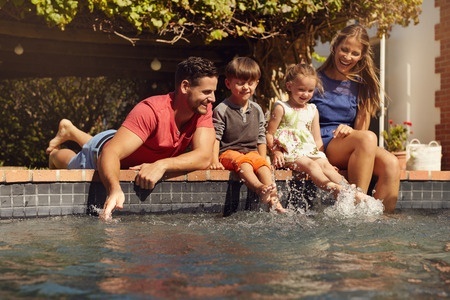All Posts
7 Tips for Overcoming Fear of the Water
Dan | August 19 2016 | , Blog, Swim Safety, Swim Tips
 Many children have a natural love of the water. Summer vacations are often spent splashing and laughing with their friends in the backyard pool or the beach. However, for other children, the water can cause a great deal of anxiety. To help children overcome a fear of the water, parents should make a gentle introduction and move at the comfort level of the kids. By showing children that the water can be fun and taking care to not add to the fear, parents can help their children find a lifelong love of the swimming.
Many children have a natural love of the water. Summer vacations are often spent splashing and laughing with their friends in the backyard pool or the beach. However, for other children, the water can cause a great deal of anxiety. To help children overcome a fear of the water, parents should make a gentle introduction and move at the comfort level of the kids. By showing children that the water can be fun and taking care to not add to the fear, parents can help their children find a lifelong love of the swimming.
Here are some tips to help you get started.
Start Small
The initial goal of introducing your children to the water is to create a comfortable environment for them to develop an understanding of how water works. Start in the bathtub or with a small kiddie pool in the backyard. Use warm water, which is more relaxing than cold water, and only fill it up to their legs.
Use Toys
As they’re sitting in their shallow, warm water, bring in their favorite toys. Some of the toys should float and some should sink, so that the child can begin to make visual sense of it all.
Pour Water
Once a child become comfortable sitting in the shallow water, add a cup or bucket to the mix, so he can begin to experiment with pouring the water over his skin. Be cautious to not pour the water over his face until he is ready for it. Begin by pouring it over the back of his head, and then slowly let some of it dribble forward. Take it slow, as this can be scary for the child.
Blow Bubbles
One of the best ways to begin developing comfort with getting a child’s face wet is to make a game out of blowing bubbles. As the child gets her face closer to the water, she’s naturally gaining an understanding of how the water works and whether she needs to fear it or not.
Dangle Toes
Once the child has progressed past his fear of water in the bathtub, it’s time to sit next to a pool. Dangle your feet into the water with the child close to your side. Encourage him to do the same. Once they are comfortable with that, try sitting on the top step in the pool. As the child’s comfort level increases, continue to progress a little deeper with the goal of getting them to stand on their own while immersed.
Bring Friends
Children are more likely to try something new when they see their friends or siblings enjoying the activity. Additionally, they’re fantastic at mimicking. Play games with the children in the water that encourage them to focus on something other than the water around them.
Take Lessons
Professional swim instructors are not only trained to teach your child how to swim; they are also prepared to help your child overcome fears. By arming your child with the skills they need to swim, you’ll replace anxiety with a sense of accomplishment. Premier Aquatic Services swim instructors use an exciting approach to help swimmers of all ages learn the skills necessary for a lifetime of swimming enjoyment.
To learn more about our swim lesson programs and register family for fall swim classes, visit our aquatic services page.
For more information on water safety, follow us on Facebook.
